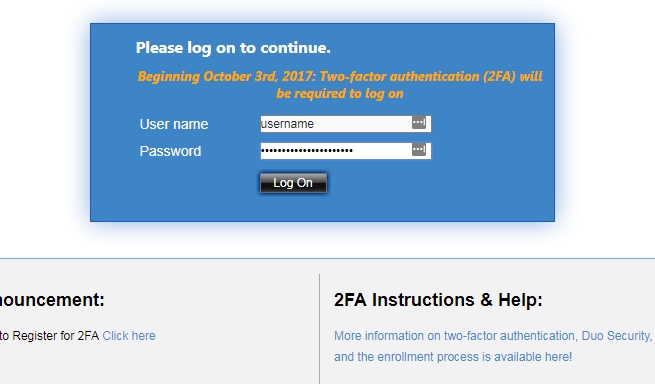Dec 25, 2019 On another Mac computer, open Microsoft Remote Desktop for Mac, click the Settings icon in the top menu bar, then click Import from RDP file. In the Finder window that appears, click iCloud Drive in the left-hand menu.
Enable UDP over RDP. One way to improve your RDP connection is to enable UDP instead of relying on just TCP alone. The advantage of enabling UDP is just like you are streaming a YouTube clip any missing or dropped frame does not cause an additional round-trip to try to retry and retrieve it from the server. Go to Microsoft Remote Desktop for Mac and select Download. You don't need to create an account or sign into AppCenter to download the beta client. If you already have the client, you can check for updates to ensure you have the latest version. In the beta client, select Microsoft Remote Desktop Beta at the top, and then select Check for updates. Step One: Go to the Mac App Store and download the “ Microsoft Remote Desktop 10 ” app. Although the app is free you will still need an Apple ID to download it.
This tutorial will show you how to connect to your Windows VPS or dedicated server at Contabo via RDP from different operating systems.
The following scenarios will be covered:
Connections from desktop operating systems:
- Establishing a RDP connection from WindowsOS (e.g. Windows 7, 8, 10)
- Establishing a RDP connection from LinuxOS (e.g. Debian, Ubuntu)
- Establishing a RDP connection from MacintoshOS (e.g. Apple MacBook)
Connections from mobile devices:
- Establishing a RDP connection from Android based systems (e.g. Samsung Galaxy)
- Establishing a RDP connection from iOS based systems (e.g. Apple iPhone)
RDP connections from Windows
- on Windows 7: Please navigate to the “Start icon” of the taskbar and search for “Remote Desktop Connection”
- bei Windows 8/10: Please navigate to the “Windows icon” of the taskbar and search for “Remote Desktop Connection”
The RDP client should start as follows:
Now you should be able to connect to your server using its hostname (e.g. “vmiXXXXX.contaboserver.net” for VPS or “mXXXX.contaboserver.net” for dedicated servers) or the IP address (e.g. “173.xxx.xxx.xxx“). The RDP session will be established within a few seconds automatically.
Alternatively, you might choose a few options beforehand (e.g. screen resolution and audio settings). Therefore, please click on the “Show Options” button:
Explanations:
- The screen resolution can be individually modified using the slider
- If you would like to pass through the audio signal to your local PC, you have to set the “Remote audio playback” function to “Play on this computer“
- If you would like to make your local printer available on your server, please enable the “Printer” option at the “Local devices and resources” section (Important: The printer device driver must be compellingly installed on your server!)
- The clipboard is enabled by default, so STRG + C / STRG + V will always work. It can be disabled by disabling its checkbox
Troubleshooting:
If you determine issues while connecting to your server, please find enclosed some information about how to fix them:
1. “Remote Desktop can’t connect to the remote computer for one of these reasons”:
Causes / Solutions:
- Please check whether your server is responding to Ping (= ICMP) requests. If not, please try to reboot your server using your customer control panel: https://my.contabo.com/account/login
- If you use a VPS, you can also connect to your server through VNC to check the server and firewall settings:
https://contabo.com/?show=tutorials&tutorial=vnc-connect-vps - If you use a dedicated server, please get in contact with us at support@contabo.com, if you do not have a KVM device attached to your server yet
2. “The remote session was disconnected because there are no Remote Desktop Licence Servers available to provide a license. Please contact the server administrator.”
Causes / Solutions:
Obviously, a terminal service was installed on your server and no active licence server has been assigned yet. After the grace period of 90 respectively 120 days, all temporarily licences will be deleted and all further RDP logins will be rejected.
To fix this issue, you either have to delete the terminal service or the affected Windows Registry key
- If you rent a VPS, you can connect to your server through VNC to perform the required steps:
- If you use a dedicated server and you do not have a KVM device attached to your server yet, please get in contact with us at support@contabo.com
* The required server role “Remote Desktop Services” can be deleted at the server manager (“Remove roles and features”)
* The affected Registry key can be deleted at the following path:
HKEY_LOCAL_MACHINESYSTEMCurrentControlSetControlTerminal ServerRCMGracePeriod
Important: Please be careful while changing settings at the Windows registry! Please create a full backup of the registry beforehand.
* Now please perform a reboot of your server and you should be able to login to your server afterwards again
RDP connection from Linux
Alternatively, you can also connect from Linux to yourWindows server via RDP. There is a command line based program called “rdesktop” and it is usable for all available linux distributions.
- Installation:
sudo apt-get install rdesktop
- Start the RDP connection:
rdesktop <IP address>
Mac Rdp Server
Now the RDP connection has been established and you can login to your server using the initial login credentials.
Important information:
- In order to be able to establish a RDP connection, your Linux system must have an X11 server available. It should be installed by default if you already use a GUI (graphical desktop environment – e.g. “Gnome” or “KDE”)
- Please note, it is generally not recommended to establish a RDP connection through SSH
- Alternatively, there is another program called ‘freeRDP’, which can be used instead of ‘rdesktop’. Please find more information about it at http://www.freerdp.com/
RDP connection from MacOS
In order to be able to establish a RDP connection from MacOS based systems (e.g. Apple MacBook), a RDP client is also required. Please find enclosed a download URL to get the latest RDP client version:
Afterwards, you can start the RDP client following by entering the Windows login credentials (at the “Domain:” field, you can either use the server’s IP address or the hostname):
Please always use the latest RDP client version from iTunes, so it is ensured that no connection issues occur!
Troubleshooting:
1. “Remote Desktop Connection cannot verify the identity of the computer that you want to connect to”:
=> This kind of error message is mostly caused by an old respectively outdated RDP client version
Causes / Solutions:
- Please make sure, that you are currently using the latest RDP client version (download-URL above)
RDP connection from Android-based systems
To establish a RDP connection from Google-Android-based systems (e.g. Samsung Galaxy) please use the following RDP client directly from the Google App store. You can always download the latest RDP client version here:

RDP connection from iOS-based systems
Last of all, we would like to inform you about the possibility of how to connect to your Windows server via an iOS-based system (e.g. Apple iPhone).
Please find enclosed the download URL to get the latest RDP client version:
Very important: In order to use the latest RDP client above, iOS version8.0 is required at least!
Rdp For Mac Download
If you have any further questions about connecting via RDP to your server or need help, please do not hesitate to contact us at support@contabo.com.
There are multiple methods of connecting to a virtual machine in VMware. You could do it manually, through the VMware Workstation program, or install TeamViewer, LogMeIn, or any other remote access software. If you just need access within a local network, and you don’t want to access the host machine every time, it’s really easy to enable standard remote desktop connections.
Enabling remote desktop connections in VMware is done both regularly, through the operating system, and within the VMware network settings. We must set up port forwarding in VMware so the program knows what to do when we request access via remote desktop.
Configure VMware for RDP (Remote Desktop) Connections
VMware first needs to be configured to forward RDP requests to the IP address the virtual machine is using.
Step 1: Launch the menu item VM > Settings.
From the Hardware tab, select Network Adapter and choose NAT as the connection type.
Rdp Using Mac Address
Step 2: Search the start menu for command prompt from within the virtual machine. Enter ipconfig in the prompt and search for a value following the IPv4 Address. Record this address for later use. Ours is 192.168.163.133.
Step 3: Now select the menu item Edit > Virtual Network Editor.
Select the NAT network type and then choose NAT Settings.
Step 4: From this new prompt, click Add to include a new port forwarder.
Enter the following information:
Host Port:9997
The Host Port number is simply an open port number. If you’re unsure what number to use, select the one we have here.
Type: TCP
Virtual machine IP address:Enter the IP you recorded in Step 2.
Virtual machine port:3389
This port number is 3389 by default, but can be changed via a registry edit. If you’re unaware of any changes, select the one we have here.
Save any open prompts so the configuration changes can take place.
Step 5: The final step is to enable RDP connections from within the operating system itself.
In Windows 8.1, search for Who can use remote from the start menu to narrow down the results.
For Windows 7, search for Remote Desktop from the start menu and choose Select users who can use remote desktop.
For Windows XP, right-click My Computer from the start menu and navigate to the Remote settings.
Choose to Allow remote connections to this computer for any of these operating systems.
Connect To the Virtual Machine With RDP
Connecting to the VM is the same as with any other computer. Open Mstsc from the start menu and type the IP address or computer name and press Connect.
Enter the regular login details to connect, like so:
Conclusion
It’s much easier to connect to a computer of any kind, be in virtual or not, using Windows Remote Desktop. The screen isn’t bogged down by extra menu settings and you can maximize the window and use the machine as if it’s literally in front of you.

The above article may contain affiliate links which help support Guiding Tech. However, it does not affect our editorial integrity. The content remains unbiased and authentic.
Read Next
7 Best Ways to Fix Kindle for PC Desktop App Won't Open on Windows
Can't open the Amazon

